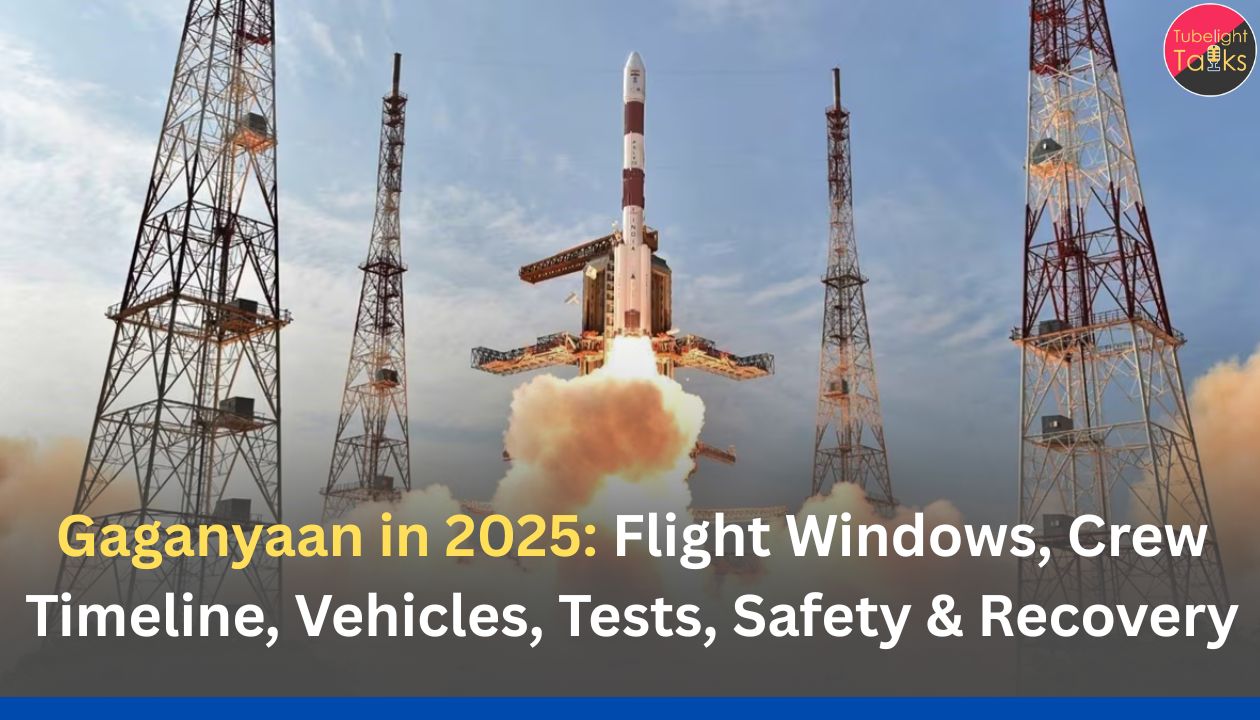Small-Sat Boom: According to BryceTech’s Smallsats by the Numbers 2024, 2,860 small satellites (≤1,200 kg) were launched in 2023, making up 97% of all spacecraft launched that year. Over 2014–2023, smallsats represented 93% of spacecraft by count and 41% of upmass.
Market forecasts see the global small-satellite segment growing from about USD 6.0 billion in 2025 to nearly USD 16.8 billion by 2032, at a CAGR of ~15.7%. Meanwhile, a 2024 survey of satellite constellations logged 411 planned or active constellations by September 2024, 160 more than in 2021—yet many are behind schedule.
The reason is not lack of demand but bottlenecks in integration and launch capacity: rideshare manifests are packed, small launchers are struggling to scale, and clean-room/test facilities are finite. NASA’s 2024–25 small spacecraft integration report notes that rideshare integration has become “complex” and heavily constrained by “do no harm” rules and limited adapter capacity, even as demand for small-sat launches rises “exponentially.”
India sees an opening. With low-cost engineering talent, ISRO heritage and new private players, New Delhi wants to turn the country into a global hub for building and launching small satellites, targeting a $4–5 billion export opportunity and overall space revenues of $40–44 billion by 2033–35.
The critical question: can India ramp up satellite + launch integration fast enough to serve both its own and the world’s backlog?
The global small-sat backlog: more satellites than slots
Constellations everywhere, timelines slipping
The 2024 constellation survey from NewSpace Index shows:
- 411 commercial constellations listed by September 2024,
- Many moving slower than early slides promised,
- SpaceX and OneWeb essentially done with their first-generation systems, while dozens of newer operators are still in early deployment.
NASA and conference papers on rideshare integration describe why:
- Launchers like Falcon 9 Rideshare can only take so many deployers and dispensers per flight.
- Each small-sat must pass stringent “do no harm” tests (no stray RF, no late deployments, safe batteries).
- Multi-manifest integration forces everyone to fit into the orbit, timeline and risk profile of the primary mission.
Even with a record 126 global launch attempts in just the first half of 2024, the overall pace still lags the ambitions of constellation spreadsheets.
Result: a growing queue of funded satellites waiting for clean-room time, environmental testing slots, dispensers, and launch manifests.
India’s integration base: strong heritage, constrained throughput
ISRO, NSIL, IN-SPACe: the public backbone
India’s integration capacity today rests on three pillars:
- ISRO – legacy facilities at URSC, VSSC and SDSC for spacecraft assembly, integration and testing, plus PSLV/LVM3 launch pads.
- NewSpace India Limited (NSIL) – the commercial arm tasked with selling satellite capacity and, increasingly, industry-built launchers and satellites, including India’s first fully industry-made PSLV planned for 2025.
- IN-SPACe – the regulator/facilitator opening ISRO infrastructure to Non-Governmental Entities (NGEs). Its Integrated Launch Manifesto for 2023–24 and 2024–25 lists planned ISRO, NSIL and startup launches (Agnikul, Skyroot, Dhruva, Digantara and others) sharing national infrastructure.
These nodes give India credible base capacity—but they were built for dozens of satellites a year, not the hundreds-per-year class that the small-sat boom now demands.
SSLV: small launch, big expectations
ISRO’s Small Satellite Launch Vehicle (SSLV) is central to India’s integration story. Designed to loft up to 500 kg into 500 km LEO with a 72-hour turnaround, SSLV completed its development flight (SSLV-D3 with EOS-08) successfully in August 2024.
In 2025, Hindustan Aeronautics Limited (HAL) won a ₹511 crore bid to acquire SSLV technology and commercially manufacture the rocket, under a technology-transfer agreement with ISRO, IN-SPACe and NSIL.
If HAL can industrialise SSLV—supplying multiple vehicles per year at competitive prices—it directly increases India’s capacity to integrate and launch dedicated small-sat missions, not just hitch rides on PSLV or foreign rockets.
Private launchers and shared infrastructure
Startups Skyroot Aerospace and Agnikul Cosmos have already demonstrated suborbital capabilities and are working towards orbital small launchers, using ISRO test and launch facilities under IN-SPACe supervision.
But here too, integration lanes are finite:
- Each new launcher family needs its own ground support, safety reviews and integration processes.
- Startups often book slots on an already busy ISRO range schedule, limiting yearly cadence.
Without additional pads, clean rooms and dedicated small-launch integration teams, India’s launch bottleneck simply shifts from rockets to ground infrastructure.
Satellite factories: Pixxel, Dhruva, GalaxEye and the new integration hubs
National EO constellation: 12 satellites, all made and launched in India
In August 2025, IN-SPACe awarded a ₹1,200 crore PPP contract to a consortium led by Pixxel Space, with partners Piersight, SatSure and Dhruva Space, to build India’s first fully private commercial Earth observation constellation of 12 satellites—all to be manufactured and launched domestically.
The consortium plans to:
- Use Dhruva Space’s large spacecraft manufacturing facility in Hyderabad for assembly and integration,
- Leverage Dhruva’s in-house Solis space-grade solar panels, already being exported to customers in Europe, the Gulf and Australia,
- Fly on Indian rockets wherever possible.
This is effectively a private integration line for a mid-size constellation—something India lacked just a few years ago.
GalaxEye and the “Drishti” benchmark
Bengaluru-based GalaxEye is preparing to launch “Drishti”, a 160 kg multi-sensor satellite that will be India’s largest privately built commercial satellite, on a SpaceX rocket in early 2026.
Two takeaways:
- Indian firms now have the skills to integrate larger, more complex smallsats.
- They are still booking foreign launch and integration slots (in this case, SpaceX) because Indian capacity isn’t yet deep or predictable enough for every mission.
The emerging “integration ecosystem”
Alongside Pixxel and GalaxEye, companies like Dhruva Space, Bellatrix, Digantara, Space Kidz India and university labs are building or using:
- Modular bus platforms for 10–200 kg satellites,
- In-house AIT (Assembly, Integration & Testing) bays and environmental chambers,
- Standardised deployers and separation systems for rideshare missions.
This is the kernel of a small-sat integration cluster, but it remains fragmented and capacity-limited compared to U.S. or European hubs.
The bottleneck: integration, not ideas
Rideshare reality and “do no harm” constraints
NASA’s 2024 Integration, Launch and Deployment guidance notes that rideshare launches impose strict “do no harm” requirements on secondary satellites, with constraints on RF transmissions, mechanical deployments and hazardous materials.
For each mission, integrators must:
- Qualify each satellite’s design and behaviour,
- Manage multi-party test campaigns,
- Resolve last-minute changes without compromising the primary payload.
As more operators queue for rideshares, integration teams—not rockets—become the scarce resource, creating a de facto backlog even when launch vehicles exist.
India’s specific choke points
India’s pain points can be summarised as:
- Limited AIT floor space and test facilities
- Most high-end TVAC chambers, shaker tables and EMI/EMC labs are located at ISRO centres; private capacity is growing but still modest.
- Most high-end TVAC chambers, shaker tables and EMI/EMC labs are located at ISRO centres; private capacity is growing but still modest.
- Range and pad access
- PSLV, LVM3 and soon SSLV share two main pads at Sriharikota. New launch sites like Kulasekarapattinam (for polar launches) and expanded facilities for startups are still under development.
- PSLV, LVM3 and soon SSLV share two main pads at Sriharikota. New launch sites like Kulasekarapattinam (for polar launches) and expanded facilities for startups are still under development.
- Manifest planning for NGEs
- IN-SPACe’s integrated launch manifesto is a step forward, but small-sat customers still face uncertain timelines and must often hedge with foreign launch options, as GalaxEye did with SpaceX.
- IN-SPACe’s integrated launch manifesto is a step forward, but small-sat customers still face uncertain timelines and must often hedge with foreign launch options, as GalaxEye did with SpaceX.
- Talent bandwidth
- ISRO veterans and a small pool of experienced private engineers are stretched across design, AIT and mission operations. Training the next wave is urgent.
- ISRO veterans and a small pool of experienced private engineers are stretched across design, AIT and mission operations. Training the next wave is urgent.
Unless these choke points are addressed, India risks winning design and manufacturing contracts but losing value to foreign integrators and launchers.
Can India catch up—and even leapfrog?
Experts see three strategic levers.
Lever 1: Industrialise SSLV and diversify launch access
- Fast-track HAL’s SSLV industrialisation, aiming for multiple launches per year dedicated to small-sats.
- Bring Skyroot and Agnikul to orbital cadence and integrate them into IN-SPACe manifests so constellation customers see predictable Indian options alongside SpaceX or European rideshares.
Lever 2: Build “integration parks” around Hyderabad, Bengaluru, Chennai
- Cluster clean rooms, TVAC/EMI labs, deployer manufacturing, and mission assurance teams into shared “small-sat integration parks,” reducing per-satellite capex for startups.
- Use anchor projects like the Pixxel-led EO constellation to justify multi-shift AIT operations, with excess capacity sold to global customers facing backlog.
Lever 3: Specialise in data & downstream, not heavy launch
India’s official strategy is to focus on small satellites, data analytics and applications, not compete head-on with SpaceX in mega-lift rockets.
If integration capacity keeps up, India can become:
- A cost-effective build+launch hub for Earth observation, IoT and climate-monitoring constellations, and
- A global provider of analytics and services (agri intelligence, disaster monitoring, maritime tracking).
In other words, catching up on integration isn’t about bragging rights—it’s about unlocking downstream value.
Small-sat growth, Dharma and orbital responsibility
From a Satgyan viewpoint inspired by Sant Rampal Ji Maharaj, the small-sat boom raises deeper questions about human values far above the atmosphere.
- If small-sat constellations mainly serve advertising, speculation or militarisation, while rural communities still lack basic services, then the boom is asymmetrical and adharmic.
- A Dharmic approach would prioritise constellations that reduce suffering—for example, satellites that improve crop insurance, disaster warning, water management and climate resilience for the poor.
- Operators must honestly acknowledge that thousands of satellites increase collision and debris risk in LEO. Marketing narratives about “harmless cubesats” cannot hide the karmic and practical consequences of irresponsible end-of-life practices. NASA’s small-sat reports stress the importance of de-orbit plans and safe operations; ignoring this would be against Satya.
- Compassion in space policy means designing constellations and integration capacity in a way that respects both Earth and space as shared commons, not as dumping grounds for junk or arenas for domination.
- For India, that implies using its new integration muscle to support equitable, climate-positive and peace-oriented space applications, rather than chasing every lucrative but ethically dubious opportunity.
In simple terms:
The real measure of whether India “catches up” is not just how many satellites we can integrate and launch, but whether those satellites serve Sarvajan Hitāya, Sarvajan Sukhāya—the welfare and happiness of all.
Read Also: ISRO Offers Advanced Data Products for Deeper Understanding of the Lunar Polar Region
FAQs: Small-Sat Boom
1. What is causing the global small-sat backlog?
Constellation demand exceeds launch and integration capacity. Rideshares are complex, adapters limited, ranges crowded, and many small-launch providers are still scaling.
2. How big will the small-satellite market become?
Forecasts project growth from about USD 6 billion in 2025 to nearly USD 17 billion by 2032.
3. What role does SSLV play in India’s capacity?
SSLV offers quick, dedicated small-sat launches and, with HAL manufacturing, could reduce reliance on foreign rideshares if production scales.
4. How are Indian startups contributing?
They build satellite buses, payloads, AIT facilities, export components, and lead PPP constellations manufactured and launched in India.
5. Can India catch up with the global backlog?
Yes, if SSLV and private launchers scale fast, integration parks grow, IN-SPACe enables predictable access, and missions prioritise societal and climate needs.
If these pieces come together, India can not only catch up—but become a trusted, responsible integration hub for the world’s small-sat ambitions.










